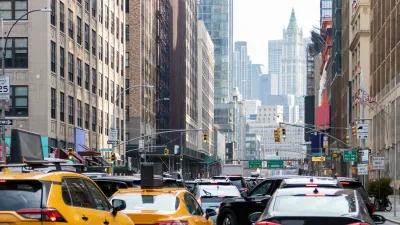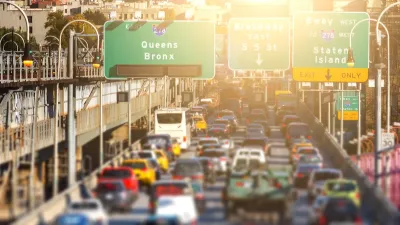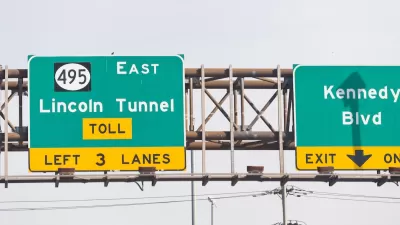Congestion pricing is an economic tool for a difficult, complicated problem, and must be calculated carefully to avoid unintended consequences.

Adam Milsap shares news of a new paper by Jeffrey Brinkman that serves as a reminder of the world's complications, especially with regard to congestion and agglomeration economies.
For those unfamiliar with the latter term, Milsap defines agglomeration economies as "the benefits that occur when firms and workers are in proximity to one another." Importantly, agglomeration economies are a behavior commonly found in firm clusters and cities.
While taxing activities that generate negative externalities and subsidizing activities that generate positive externalities is economically sound, calculating the appropriate tax or subsidy is often difficult in practice. The key problem, according to Milsap: "Since congestion is a result of the high population density that is also associated with agglomeration economies, there is tradeoff between the two."
So Jeffrey Brinkman's paper, published in the Journal of Urban Economics, argues:
…if city officials ignore the positive effect of agglomeration economies on productivity when calculating their congestion taxes they may set the tax too high. Overall welfare may improve even if the tax is too high (it depends on the size of the DWL when no tax is implemented) but society will not be as well off as it would be if the positive agglomeration effects were taken into account.
FULL STORY: Congestion taxes can make society worse off

Alabama: Trump Terminates Settlements for Black Communities Harmed By Raw Sewage
Trump deemed the landmark civil rights agreement “illegal DEI and environmental justice policy.”

Planetizen Federal Action Tracker
A weekly monitor of how Trump’s orders and actions are impacting planners and planning in America.

The 120 Year Old Tiny Home Villages That Sheltered San Francisco’s Earthquake Refugees
More than a century ago, San Francisco mobilized to house thousands of residents displaced by the 1906 earthquake. Could their strategy offer a model for the present?

Indy Neighborhood Group Builds Temporary Multi-Use Path
Community members, aided in part by funding from the city, repurposed a vehicle lane to create a protected bike and pedestrian path for the summer season.

Congestion Pricing Drops Holland Tunnel Delays by 65 Percent
New York City’s contentious tolling program has yielded improved traffic and roughly $100 million in revenue for the MTA.

In Both Crashes and Crime, Public Transportation is Far Safer than Driving
Contrary to popular assumptions, public transportation has far lower crash and crime rates than automobile travel. For safer communities, improve and encourage transit travel.
Urban Design for Planners 1: Software Tools
This six-course series explores essential urban design concepts using open source software and equips planners with the tools they need to participate fully in the urban design process.
Planning for Universal Design
Learn the tools for implementing Universal Design in planning regulations.
Clanton & Associates, Inc.
Jessamine County Fiscal Court
Institute for Housing and Urban Development Studies (IHS)
City of Grandview
Harvard GSD Executive Education
Toledo-Lucas County Plan Commissions
Salt Lake City
NYU Wagner Graduate School of Public Service





























